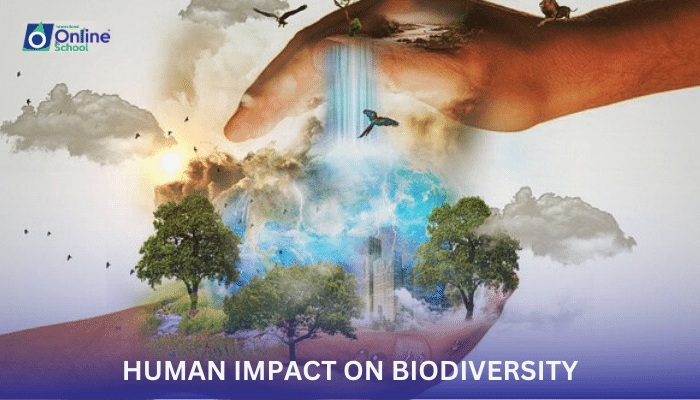
Learning Outcomes:
i. Students will articulate how human activities impact biodiversity.
ii. They will identify specific human actions that have negative effects on different species and ecosystems.
iii. Students will be able to suggest measures to reduce human impact on biodiversity.
Summary of Lesson:
Just like a ripple in a pond, everything we do affects the world around us. In this lesson, we'll look at how humans have changed the planet and what this means for all the different kinds of life we share it with.
i. Human Activities and Biodiversity Loss:
We'll explore how cutting down forests, polluting the environment, and overfishing in the oceans have led to many plants and animals struggling to survive. This is causing biodiversity to decrease, which means we're losing the variety of life.
ii. Climate Change and Biodiversity:
Changes in the Earth's climate because of human activities, like burning fossil fuels, are making it hard for many species to find the food and shelter they need, which can lead to extinction.
iii. The Spread of Invasive Species:
Sometimes, people move plants or animals from where they usually live to new places. These can become invasive species that take over, pushing out the local species.
iv. Pollution and Biodiversity:
We'll see how pollution in the air, water, and land can poison plants and animals and make it tough for them to live in their habitats.
v. Positive Human Impact:
Not all the news is bad. People are also working to protect biodiversity by setting up wildlife reserves, cleaning up pollution, and passing laws to keep species safe.
List of Important Questions for Self-Study:
i. What are some ways that human activities have led to a loss of biodiversity?
ii. How does deforestation affect biodiversity?
iii. In what ways does climate change impact different species?
iv .What is an invasive species, and how can it affect local ecosystems?
v. How does pollution contribute to biodiversity loss?
vi. Can you think of a local example of human impact on biodiversity?
vii. What measures can be taken to mitigate human impacts on biodiversity?
viii. How do conservation efforts help protect biodiversity?
ix. Why is it important to maintain biodiversity in ecosystems?
x. What can you do to help protect biodiversity in your community?
Important Terminologies Used in Lesson:
i. Biodiversity: The variety of life in the world or in a particular habitat or ecosystem.
ii. Extinction: The state or process of a species, family, or larger group being or becoming extinct.
iii. Climate Change: Long-term alteration of temperature and typical weather patterns in a place.
iv. Invasive Species: Non-native species that significantly modify or disrupt the ecosystems they colonize.
v. Pollution: The introduction of contaminants into the natural environment that cause adverse change.
vi. Conservation: The protection, preservation, management, or restoration of natural environments and the ecological communities that inhabit them.